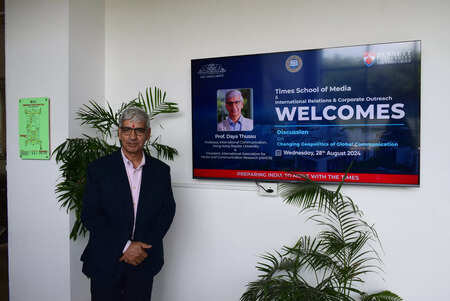How do we manage and recycle nuclear waste
Times of Bennett | Updated: Mar 27, 2023 19:08

By Jai Goyal
Nuclear energy has been touted as one of the cleanest forms of energy available. However, one of the major drawbacks of nuclear energy is the nuclear waste it produces. Nuclear waste is highly radioactive and can remain dangerous for hundreds of thousands of years, posing a serious threat to human health and the environment. As such, it is important that we manage and recycle nuclear waste responsibly.
There are several ways to manage and recycle nuclear waste, including reprocessing, disposal, and storage. Reprocessing is the process of extracting usable materials from spentnuclear fuel . This process can recover up to 95% of the original uranium and plutonium, reducing the volume of nuclear waste that needs to be disposed of. However, reprocessing can also create new types of radioactive waste, and it has been linked to the proliferation of nuclear weapons. As such, reprocessing is a controversial method of managing nuclear waste.
Disposal is another method of managing nuclear waste. Nuclear waste can be stored in a geological repository, deep underground in a stable rock formation. The waste is contained in metal canisters and surrounded by layers of engineered barriers, such as concrete and clay. This method of disposal is currently used in several countries, including Finland and Sweden. However, the construction of geological repositories can be expensive, and there is a risk of groundwater contamination if the repository is not designed and built properly.
Storage is the most common method of managing nuclear waste. Nuclear waste is stored in specially designed containers, usually made of steel or concrete, and stored in secure locations. The containers are monitored regularly to ensure they remain intact and do not leak radiation. However, storage is not a long-term solution, as nuclear waste can remain dangerous for hundreds of thousands of years.
Recycling is another method of managing nuclear waste. Recycling involves using nuclear waste as fuel for nuclear reactors. This process is known as "closed fuel cycle" or "nuclear fuel cycle ". In a closed fuel cycle, spent fuel is reprocessed to extract usable materials, which are then used to produce new fuel. This process reduces the volume of nuclear waste that needs to be disposed of and can increase the efficiency of nuclear power generation. However, recycling also creates new types of radioactive waste and can be expensive to implement.
In conclusion, managing and recycling nuclear waste is a complex and controversial issue. Each method of managing nuclear waste has its own advantages and disadvantages, and the best approach will depend on a range of factors, including the type and amount of nuclear waste, the available technology, and the political and social context. It is important that we continue to research and develop new methods of managing nuclear waste, to ensure that we can generate clean energy without putting human health and the environment at risk.
There are several ways to manage and recycle nuclear waste, including reprocessing, disposal, and storage. Reprocessing is the process of extracting usable materials from spent
Disposal is another method of managing nuclear waste. Nuclear waste can be stored in a geological repository, deep underground in a stable rock formation. The waste is contained in metal canisters and surrounded by layers of engineered barriers, such as concrete and clay. This method of disposal is currently used in several countries, including Finland and Sweden. However, the construction of geological repositories can be expensive, and there is a risk of groundwater contamination if the repository is not designed and built properly.
Storage is the most common method of managing nuclear waste. Nuclear waste is stored in specially designed containers, usually made of steel or concrete, and stored in secure locations. The containers are monitored regularly to ensure they remain intact and do not leak radiation. However, storage is not a long-term solution, as nuclear waste can remain dangerous for hundreds of thousands of years.
Recycling is another method of managing nuclear waste. Recycling involves using nuclear waste as fuel for nuclear reactors. This process is known as "closed fuel cycle" or "
In conclusion, managing and recycling nuclear waste is a complex and controversial issue. Each method of managing nuclear waste has its own advantages and disadvantages, and the best approach will depend on a range of factors, including the type and amount of nuclear waste, the available technology, and the political and social context. It is important that we continue to research and develop new methods of managing nuclear waste, to ensure that we can generate clean energy without putting human health and the environment at risk.











